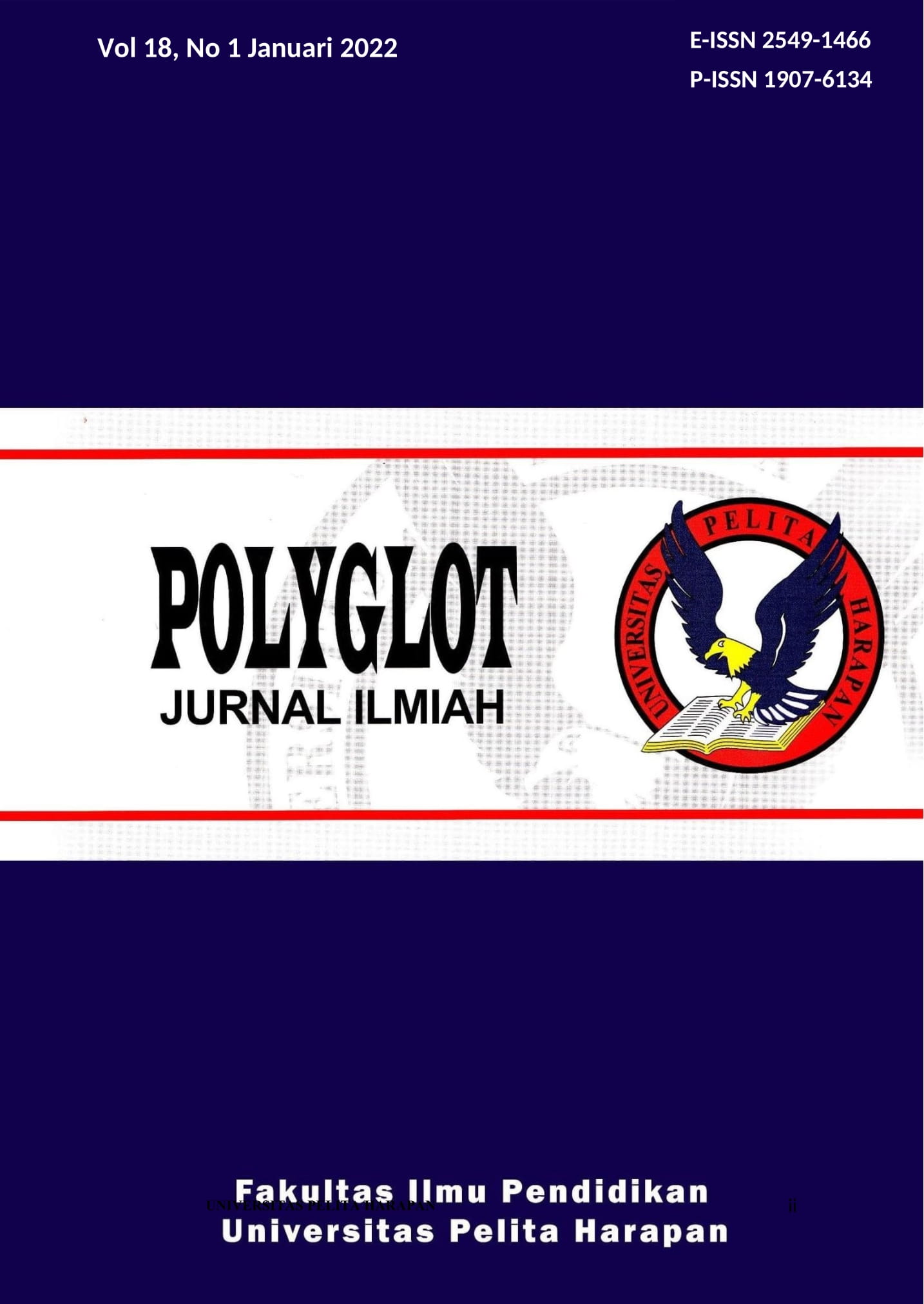STRATEGI PENERAPAN BERPIKIR KRITIS, LOGIS DAN REFLEKTIF DALAM PEMBELAJARAN PENGANTAR AKUNTANSI DI ERA DARING: SUATU TINJAUAN EPISTEMOLOGIS [STRATEGY IN THE IMPLEMENTATION OF CRITICAL, LOGICAL, AND REFLECTIVE THINKING DURING ONLINE LEARNING IN INTRODUCTION TO ACCOUNTING 1: AN EPISTEMOLOGICAL REVIEW]
DOI:
https://doi.org/10.19166/pji.v18i1.4892Ключевые слова:
accounting, online learning, pembelajaran daring, akuntansi, epistemologi, Microsoft TeamsАннотация
Accounting is related to the practice of logical-mathematical calculations. The practice needs to be preceded by the basis of the correct meaning. The purpose of this study is to describe learning strategies that emphasize critical, logical, and reflective thinking in online learning Introduction to Accounting 1. The research method used is a descriptive approach with observational data, documentation, and questionnaires filled out by 27 Economic Education students. The results show that online learning strategies combined with synchronous and asynchronous activities starting from greetings, opening activity, main activity, and closing activity with conversation and meet features in Microsoft Teams lead to fun experience learning and thus encourage students to think deeply logically, critically, and reflectively.Bahasa Indonesia Abstrak: Akuntansi sarat dengan praktik perhitungan logis matematis. Adapun praktik perlu didahului dengan dasar pemaknaan yang benar. Tujuan dari penelitian ini adalah memaparkan strategi pembelajaran yang menekankan pada berpikir kritis, logis dan reflektif dalam pembelajaran Pengantar Akuntansi 1 secara daring. Metode penelitian menggunakan pendekatan deskriptif dengan data observasi, dokumentasi dan angket yang diisi oleh sebanyak 27 mahasiswa Pendidikan Ekonomi tingkat dua. Hasilnya menunjukkan bahwa strategi pembelajaran daring dengan kombinasi kegiatan sinkronous maupun asinkronous yang dimulai dari salam pembuka, kegiatan awal, inti dan penutup dapat membuat mahasiswa belajar secara menyenangkan tetapi sekaligus membuat mereka berpikir mendalam secara logis, kritis dan reflektif.
Библиографические ссылки
Belawati, T. (2020). Pembelajaran online. Tangerang, Indonesia: Universitas Terbuka.
Conrad, R.-M., & Donaldson, J. A. (2004). Engaging the online learner: Activities and resources for creative instruction. San Fransisco, CA: Jossey-Bass.
Dunia, F. A. (2010). Ikhtisar lengkap pengantar akuntansi. Jakarta: Lembaga Penerbit Fakultas Ekonomi Indonesia.
Herry. (2016). Akuntansi dasar 1 & 2. Jakarta: Gramedia.
Isgiyarta, J. (2011). Telaah kritis filsafat positivisme untuk pengembangan teori akuntansi. Jurnal Akuntansi dan Auditing Indonesia, 204-214. Retrieved from https://journal.uii.ac.id/JAAI/article/view/3752/3328
Knight, G. R. (2006). Philosophy & education: An introduction in Christian perspective. Berrien Springs, MI: Andrews University Press.
Lako, A. (2004). Peran filsafat ilmu sebagai pondasi utama dalam pengembangan ilmu (teori) akuntansi. Jurnal Bisnis dan Akuntansi, 167-188. https://doi.org/10.34208/jba.v6i2.572
Naugle, D. K. (2012). Phiolosophy. Wheaton, Illinois: Crossway.
Nofianti, L. (2012). Kajian filosofis akuntansi: Seni, ilmu atau teknologi. Pekbis Jurnal, 203-210. Retrieved from https://pekbis.ejournal.unri.ac.id/index.php/JPEB/article/view/1474/1450
Prayogoh, D. A., & Hakim, L. (2017). Pengaruh kecerdasan logis-matematis, hasil belajar pengantar akuntansi, dan penggunaan media pembelajaran terhadap tingkat pemahaman akuntansi di SMK negeri 1 Surabaya. Jurnal Pendidikan Akuntansi. Retrieve from https://ejournal.unesa.ac.id/index.php/jpak/article/view/19380/17698
Race, P. (2007). 500 tips for open and online Learning. New York: Taylor & Francis.
Race, P. (2015). The lecturer's toolkit: A practical guide to assessment, learning, and teaching. New York: Routledge.
Rasilim, C. (2019). Studi pengalaman mahasiswa calon guru dalam mempraktekkan filsafat pendidikan Kristen. Polyglot: Jurnal Ilmiah, 15(1), 36-57. http://dx.doi.org/10.19166/pji.v15i1.1075
Reeve, J. M., Warren, C. S., Duchac, J. E., Wahyuni, E. T., Soepriyanto, G., Jusuf, A. A., & Djakman, C. D. (2009). Pengantar akuntansi buku 1: Adaptasi Indonesia. Jakarta: Salemba Empat.
Sandang, Y. (2013). Dari filsafat ke filsafat teknologi. Yogyakarta, Indonesia: Kanisius.
Suciati, Belawati, T., Padmo, D., & Handayani, D. (2015). Difusi inovasi. Tangerang, Indonesia: Universitas Terbuka.
Suciati, Wardani, I., Winantaputra, U. S., Malati, I., Mustafa, D., & Herry, A. (2016). Integrasi teori dan praktek pembelajaran. Tangerang, Indonesia: Universitas Terbuka.
Syarifudin, A. S. (2020). Implementasi pembelajaran daring untuk meningkatkan mutu pendidikan sebagai dampak diterapkannya social distancing. Jurnal Pendidikan Bahasa dan Sastra Indonesia Metalingua, 31-34. https://doi.org/10.21107/metalingua.v5i1.7072
Triyuwono, I., Djamhuri, A., Mulawarman, A. D., & Prawironegoro, D. (2016). Filsafat ilmu akuntansi: Berpikir kontemplatif, holistik, intuitif, imajinatif, kreatif, rasional, dan radikal dalam akuntansi. Jakarta: Mitra Wacana Media.
Zellatifanny, C. M., & Mudjiyanto, B. (2018). Tipe penelitian deskripsi dalam ilmu komunikasi. Diakom: Jurnal Media dan Komunikasi, 83-90. https://doi.org/10.17933/diakom.v1i2.20
Загрузки
Опубликован
Выпуск
Раздел
Лицензия
Authors who publish with this journal agree to the following terms:
1) Authors retain copyright and grant the journal right of first publication with the work simultaneously licensed under a Creative Commons Attribution License (CC-BY-SA 4.0) that allows others to share the work with an acknowledgement of the work's authorship and initial publication in this journal.
2) Authors are able to enter into separate, additional contractual arrangements for the non-exclusive distribution of the journal's published version of the work (e.g., post it to an institutional repository or publish it in a book), with an acknowledgement of its initial publication in this journal.
3) Authors are permitted and encouraged to post their work online (e.g., in institutional repositories or on their website). The final published PDF should be used and bibliographic details that credit the publication in this journal should be included.





